#Mars NASA missions
Text

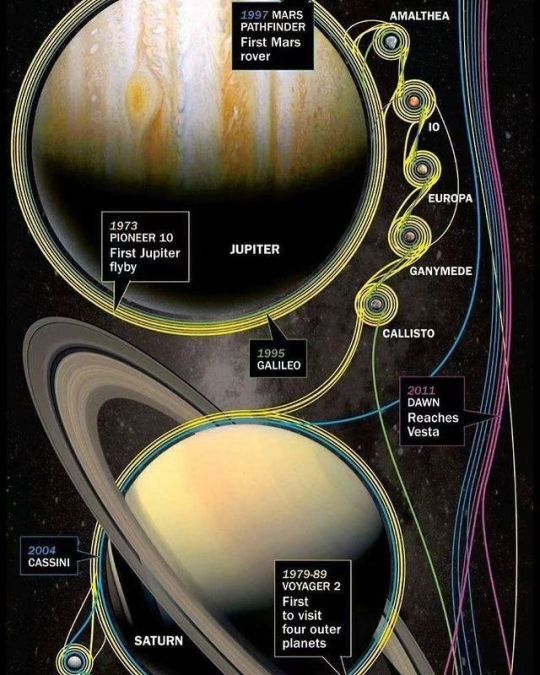
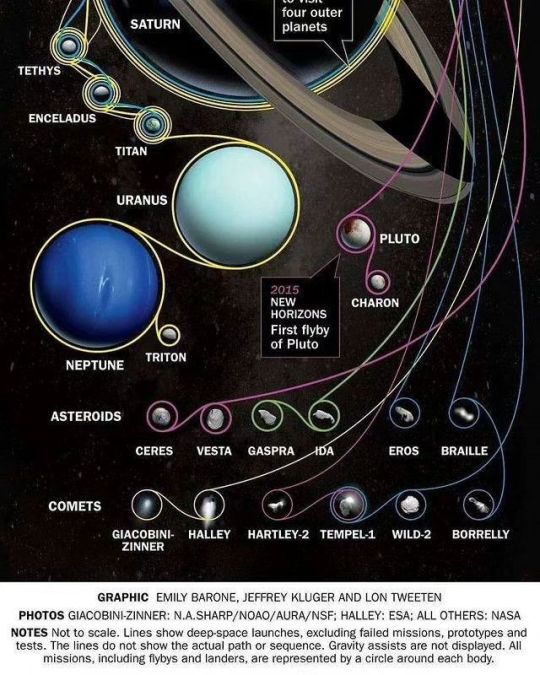
" Nasa's Deep Space Mission " //© Astro Voyagers
#Space#Nasa#ISS#Space Exploration#Space Missions#Planets#Earth#Moon#Sun#Mercury#Venus#Mars#Jupiter#Saturn#Uranus#Neptune#Pluto#Solar System#Galaxy#Galaxies#Milkyway#Universe#aesthetics#wanderlust#explore#follow#discover
537 notes
·
View notes
Photo




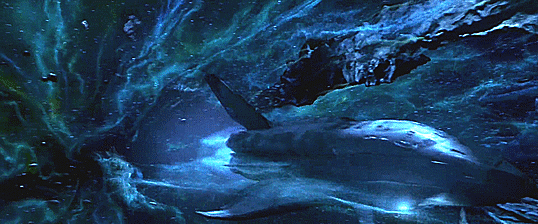
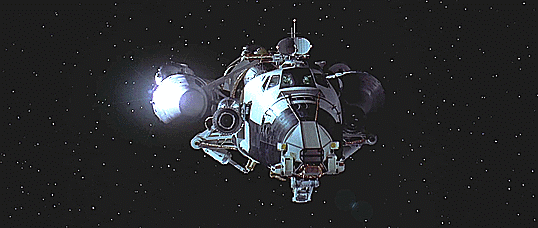


Near Future NASA on film part 1: Space Shuttles, Next Generation Shuttles, and Shuttle-adjacent
1. Moonraker’s passenger shuttle
2. Heavy Metal’s personal shuttle
3. Airplane II: The Sequel’s passenger shuttle
4. Lifeforce’s Churchill Shuttle
5. Armageddon’s Freedom and Independence shuttles
6. Deep Impact’s Messiah shuttle and interplanetary booster
7. Species II’s Excursion shuttle and interplanetary booster
8. Mission to Mars’ Mars II interplanetary craft
#Space Shuttle#NASA#movies#scifi#space ship#Moonraker#Heavy Metal#Airplane II: The Sequel#Lifeforce#Armageddon#Deep Impact#Mission to Mars#spaceshipedit#Species II#filmedit#GIF#my gifs#Hide and Queue#this was part of a series of gifs I had in mind last year#and thne made 2 sets and moved on to something else#thinking i'd come back to it
183 notes
·
View notes
Text
The greatest success of the Biden administration:

President Joe Biden has STOLEN $175.9 billion dollars from our veterans, from our elderly and disabled, from education and nutritional programs... Joe Biden has stolen all that money from science and defense and given it to an ungrateful Ukraine that uses it in part to corrupt our society.
For real.
Washington lobbiests cost money, lots of money, and the Ukraine has them. And Joe Biden stole the money for those lobbiests from Americans and gave it to the Ukrainians, so they can bribe our politicians.
Media costs a lot of money, lots & lots & lots of money. It costs buckets of money -- wheelbarrows of cash -- to pay the media to "Report" your personal narrative. And it costs lots of money, lots & lots & lots of money to pay the media to NOT report anything that embarrasses your precious narrative. Joe Biden stole all that money from you, your children and grandchildren to give to the Ukraine so they can pay for this propaganda, this "Fake News."
Science? Try this:
Nature magazine called the price of a NASA return mission from Mars -- a mission to collect samples from Mars and fly them back to earth -- "Astronomical." The price tag on that mission was "Astronomical." That mission was estimated to cost $11 billion.
We can't spend $11 billion for science, to further the knowledge of mankind, because $11 billion is an astronomical price tag, but Joe Biden can steal $175.9 billion from our elderly, our veterans and our school children to pay for European expansionism.
FJB
#NASA#Mars Return Mission#Science#suck my freedom#The Ukraine#god is a republican#kyle rittenhouse#make america great again#Take it back#Make it right#MAGA#donald trump#trump#congress#2nd Amendment
16 notes
·
View notes
Text

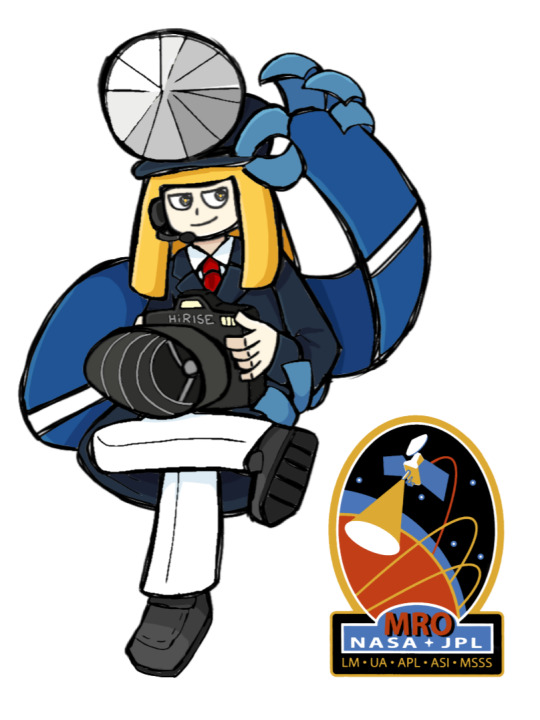

Those three Mars probes.
#2001 mars odyssey#mars odyssey#odyssey#mars reconnaissance orbiter#mro#hirise#and! *breathes*#mars atmosphere and volatile evolution mission#nasa#my art#artists on tumblr#digital art#space#mars#personification
9 notes
·
View notes
Text
bitches really be out here watching documentaries on the opportunity rover and the voyager mission and be bawling their eyes out.
it's me i'm bitches
66 notes
·
View notes
Text
LETTER B FOR THIS YEAR`S #36daysoftype
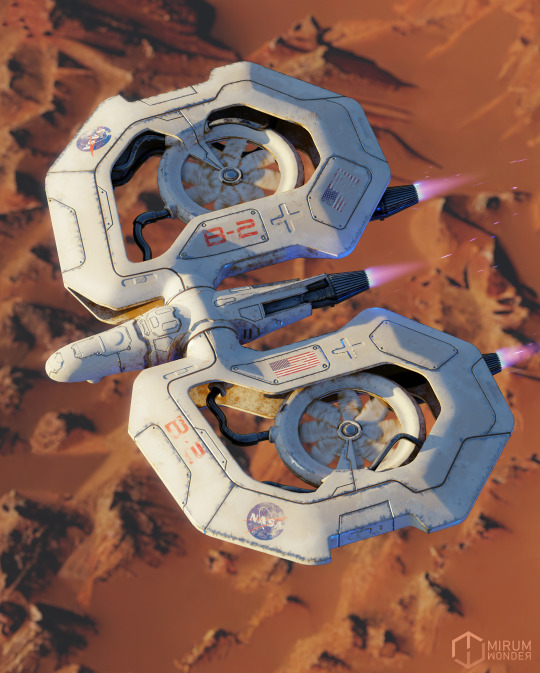
Hope you like it 😊✌️
For more of the art stuff I do feel free to check out my Linktree
#36daysoftype#36days b#36daysoftype10#space#drone#nasa#NASA#Mars#mars#mars mission#space exploration#scifi#sci-fi#science fiction#digital artist#digital art#concept art#concept artist#spaceship#space craft#cyberpunk#cyberpunk art#blender#blender 3d#blender community#blender cycles#blender modeling#blender art#blender artist
26 notes
·
View notes
Text
Welcome to the Mars Mission Tournament, pitting Mars spacecraft against each other to determine the Ultimate Martian™
There are 40 missions in the tournament, including flybys, orbiters, landers and rovers (and one helicopter). I have for the most part not included missions which were failures with some exceptions (E.g. Beagle 2, Mars Polar Lander). I'm also splitting up spacecraft within missions in some instances (E.g. Perseverance and Ingenuity, the Viking landers and orbiters).
There is only one unflown mission - the ESA's Rosalind Franklin rover because it's my tournament and I love her!
Stay tuned for a bracket, some thoughts about how it's set up, and introductions to the spacecraft!
#Mars#Mars exploration#mars mission#mars rover#space exploration#nasa#esa#i don't want to like. spam tags but i do want people to see this lol#mars mission tournament
14 notes
·
View notes
Text
Rafael Navarro-Gonzalez (1959-2021): The Mexican Astrobiologist Who Shaped Our Understanding of The Planet Mars

Rafael Navarro-Gonzalez was a talented and internationally recognized chemist and astrobiologist who worked at NASA. Navarro-Gonzalez is known for his work with other researchers to study the planet Mars. He made fundamental contributions to several fields related to Astrobiology, the origin of life, and life in extreme environments. Among his many accomplishments, he helped lead the team that identified ancient organic compounds on Mars. He was a Co-I on the SAM instrument onboard NASA’s Mars Science Laboratory and on the HABIT instrument onboard ESA’s ExoMars mission. He was also on the Curiosity Mars rover team. His research blended laboratory simulations, fieldwork, and theoretical modeling in transdisciplines in chemistry, physics, and biology. This sort of dominance is unusual and requires a dynamic and intellectual curiosity beyond normal boundaries. He identified the role of volcanic lightning in the origin of life on Earth. He has established one of the very best laboratories in Latin-America.
He has published 137 papers, 4 edited books and over 225 abstracts. Among the most significant contributions are those that deal the detection of organics in Mars-like environments from cold (Antarctica), temperate (Atacama) and hot (Mojave and Libya) deserts on Earth.
Navarro-Gonzalez was born in Mexico City on April 25, 1959. He earned a bachelor’s in biology from the National Autonomous University of Mexico (UNAM) where he became full professor in 2002, and a PhD in Chemistry from the University of Maryland at College Park. Dr. Navarro-González established the Laboratory of Plasma Chemistry and Planetary Studies of the Institute of Nuclear Science at UNAM.
Rafael Navarro-Gonzalez was the first recipient of the Molina fellowship award. This prize recognizes outstanding scientific achievement. He was also the recipient of the 2009 Alexander von Humboldt Medal and the World Academy of Sciences Award in Earth Sciences.
He died on Jan. 28, 2021 due to Covid-19-related complications.
In honor of his service, NASA named a mountain on Mars after him. The mountain stretches 450 feet (120 meters) tall, “Rafael Navarro Mountain” is located on Mount Sharp in northwest Gale Crater.

Rafael Navarro Mountain
“Rafael was a good friend and dedicated scientist, and it has been a privilege and honor for our Mars exploration team to work with him over the years" said the principal investigator of Curiosity’s SAM experiment.
“We are truly honored to have a prominent hill named after our dad; it’s his and our dream come true to see this happen,” wrote Navarro-González’s children, Rafael and Karina Navarro Aceves, in a statement to NASA.
“Our dad was an accomplished scientist, but above all, a great human being who managed to balance work and family."
Sources: (x) (x) (x) (x) (x) (x)
#🇲🇽#STEM#Rafael Navarro-Gonzalez#mexican scientists#astronomy#mars#NASA#Mars Science Laboratory#SAM instrument#HABIT instrument#ESA#ExoMars mission#Curiosity mars rover#latin america#volcano#meteorology#antartica#atacama#mojave desert#libya desert#UNAM#National Autonomous University of Mexico#Laboratory of Plasma Chemistry and Planetary Studies#Institute of Nuclear Science#Molina fellowship award#2009 Alexander von Humboldt Medal#World Academy of Sciences Award#covid-19#coronavirus#Rafael Navarro Mountain
4 notes
·
View notes
Text
After Three Years on Mars, NASA's Ingenuity Helicopter Mission Ends
"The end of an era. One of its main rotor blades is damaged, and the helicopter will not fly again. While the helicopter remains upright and in communication with ground controllers, imagery of its Jan. 18 flight sent to Earth this week indicates one or more of its rotor blades sustained damage during landing and it is no longer capable of flight." #ThanksIngenuity #ThanksIngenuity
2 notes
·
View notes
Text
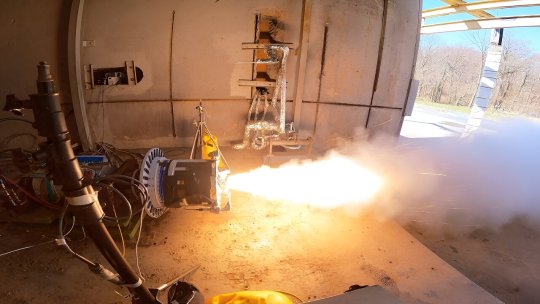
NASA Mars Ascent Vehicle continues progress toward Mars sample return
The first rocket launch from the surface of another planet will be accomplished using two solid rocket motors.
NASA's Mars Ascent Vehicle (MAV) recently reached some major milestones in support of the Mars Sample Return program. The Mars Ascent Vehicle would be the first launch of a rocket from the surface of another planet. The team developing MAV conducted successful tests of the first and second stage solid rocket motors needed for the launch.
Mars Sample Return will bring scientifically selected samples to Earth for study using the most sophisticated instrumentation around the world. This strategic partnership with ESA (European Space Agency) features the first mission to return samples from another planet. The samples currently being collected by NASA's Perseverance Rover during its exploration of an ancient river delta have the potential to reveal the early evolution of Mars, including the potential for ancient life.
Managed at NASA's Marshall Space Flight Center in Huntsville, Alabama, MAV is currently set to launch in June 2028, with the samples set to arrive on Earth in the early 2030s. The Mars Sample Return Program is managed by NASA's Jet Propulsion Laboratory in Southern California.
For the MAV to be successful, the team performs extensive testing, analysis, and review of MAV's design and components. The vehicle will travel aboard the Sample Retrieval Lander during launch from Earth, a two-year journey to Mars, and nearly a year of receiving samples collected by Perseverance.
After the Sample Transfer Arm on the lander loads the samples from Perseverance into a sample container in the nose of the rocket, the MAV will launch from Mars into orbit around the planet, releasing the sample container for the Earth Return Orbiter to capture.
The MAV launch will be accomplished using two solid rocket motors—SRM1 and SRM2. SRM1 will propel MAV away from the Red Planet's surface, while SRM2 will spin MAV's second stage to place the sample container in the correct Mars orbit, allowing the Earth Return Orbiter to find it.
To test the solid rocket motor designs, the MAV team prepared development motors. This allowed the team to see how the motors will perform and if any adjustments should be made before they are built for the mission. The SRM2 development motor was tested on March 29, 2023, at the Northrop Grumman facility in Elkton, Maryland. Then, SRM1's development motor was tested on April 7 at Edwards Air Force Base in California.
SRM1's test was conducted in a vacuum chamber that was cooled to minus 20 degrees Celsius (minus 4 degrees Fahrenheit) and allowed the team to also test a supersonic splitline nozzle, part of SRM1's thrust vector control system. Most gimballing solid rocket motor nozzles are designed in a way that can't handle the extreme cold MAV will experience, so the Northrop Grumman team had to come up with something that could: a state-of-the-art trapped ball nozzle featuring a supersonic split line.
After testing and disassembling the SRM1 development motor, analysis showed the team's ingenuity proved successful.
"This test demonstrates our nation has the capacity to develop a launch vehicle that can successfully be lightweight enough to get to Mars and robust enough to put a set of samples into orbit to bring back to Earth," said MAV Propulsion Manager Benjamin Davis at NASA's Marshall Space Flight Center. "The hardware is telling us that our technology is ready to proceed with development."
In fact, the supersonic splitline nozzle has achieved the sixth of nine technology readiness levels—known as TRL-6—developed by NASA. TRL-1 is the starting point at which there is just an idea for a new technology, while TRL-9 means the technology has been developed, tested, and successfully used for an in-space mission.
Davis said the supersonic splitline nozzle achieved TRL-6 through vacuum bench testing and full-scale hot fire testing in April. Results are being independently evaluated and will be confirmed in August.
The supersonic splitline nozzle will also undergo qualification testing to make sure it can handle the intense shaking and vibration of launch, the near vacuum of space, and the extreme heat and cold expected during MAV's trip.
In addition to motor testing, the MAV team recently conducted its preliminary design review, which was a four-day, in-depth review of MAV's overall design. Mars Ascent Vehicle Project Manager Stephen Gaddis said MAV passed that review, which means the team can now focus on continuing to improve MAV before its critical design review next summer.
NASA Marshall is designing, building, and testing MAV along with the project's two primary contractors, Lockheed Martin Space and Northrop Grumman. Lockheed Martin Space is the overall system integrator and provides multiple subsystems, and Northrop Grumman provides the first stage and second stage main propulsion systems. The Mars Sample Return Program is managed by JPL in Southern California.
3 notes
·
View notes
Text
i just went to the houston space center and oh my god that was so fucking cool god i love space i love science oh my god
#literally geeked out when i saw Mission Control center lmao#THE FUCKIN ORION WAS SO COOL#and all the mars mission stuff😭#dude i love space omg#i bought socks and a nasa pin lol
9 notes
·
View notes
Text

TROPICS Satellites
Researcher Will McCarty of the TROPICS program in NASA's Earth Sciences Division said the missions are part of an innovation leap aimed at increasing the number of climate-focused satellites in space. To function properly, the four satellites must be launched in a period of up to 60 days, so the other two cubesats will be sent in two weeks.
Originally, TROPICs missions were to be carried out through the European Space Agency's (ESA) unmanned Mars Express program, but were transferred to the Rocket Labs rocket in New Zealand.
#TROPICS Satellites#Researcher Will McCarty of the TROPICS program in NASA's Earth Sciences Division said the missions are part of an innovation leap aimed at#the four satellites must be launched in a period of up to 60 days#so the other two cubesats will be sent in two weeks.#Originally#TROPICs missions were to be carried out through the European Space Agency's (ESA) unmanned Mars Express program#but were transferred to the Rocket Labs rocket in New Zealand.
5 notes
·
View notes
Text

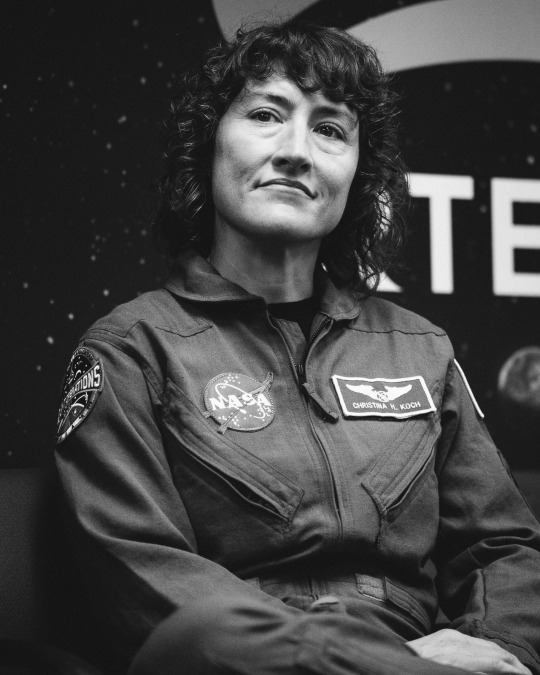
The four astronauts chosen to go to the Moon on the Artemis II mission: Christina Koch, Reid Wiseman, Victor Glover, and Jeremy Hansen.
NASA's Johnson Space Center, USA
#drowsteramericas#nasa#space#exploration#astronauts#johnson space center#artemis#moon#mission#artemis II#2#mars
2 notes
·
View notes
Text
danny acknowledging his mistake/part in what happened with the drill and not giving himself any kind of excuse only to be bodyslammed and called a piece of shit by ed makes me so sick. especially after ed admitted he was “worried” about him, afraid he wasn’t adjusting just like gordo, like. no shit he didn’t? but then they throw him to the wolves and maroon him away from everyone else? he should’ve done better but he was in an environment where he was set up to fail because there was no way he could’ve asked for help from a man constantly screaming at him and getting violent with him so OF COURSE he just turned more to drugs and it just makes me so sad. i hope they don’t just immediately jump to 03 in the next season and actually allow us to explore the consequences of all that. i hope danny gets to be better. i hope he gets to have some sort of peace
#for all mankind#fam spoilers#danny stevens#ed's reaction is Exactly why addicts don't even bother trying to seek help#ed would've just screamed and yelled like always#it just baffles me how he's gonna acknowledge the parallel to gordo only to make the Same Mistakes#this is why he couldn't be mars commander for the nasa mission! he didn't deserve it! he is a horrible leader#i'm sooo bitter he survived. sorry but kelly should've lost both her parents they suck anyway ahbdfkfjenkfdjnfds#ed baldwin critical
8 notes
·
View notes
Text
Title: This Is Not Goodbye
Fandom: Space/Space Vehicles
Author: ourswordsmeandeath
Rating: G
Words: 100
Summary:
The wind kicks up unexpectedly around Sol 106.
A drabble about the NASA InSight Lander.

#Mars#InSight#Mars lander#NASA#NASA InSight#JPL#space#outer space#planet#robot#Mars robot#InSight Mars Lander#Jet Propulsion Laboratory#space vehicle#Mars mission#science#NASA InSight lander#lander#NASA lander#space fic
3 notes
·
View notes
Text
Next Artemis mission to take four astronauts on a 10-day flyby of the Moon
Nasa’s Marshall has posted that the next Artemis mission to take four astronauts on a 10-day trip to flyby the Moon and confirm that all of Orion Spacecraft systems operate as designed with people aboard in deep space.
Leaving Earth
The mission will launch the four astronaut crew from NASA’s Kennedy Space Center in Florida in 2023, and will return using a hybrid free return trajectory.
Their…
2 notes
·
View notes